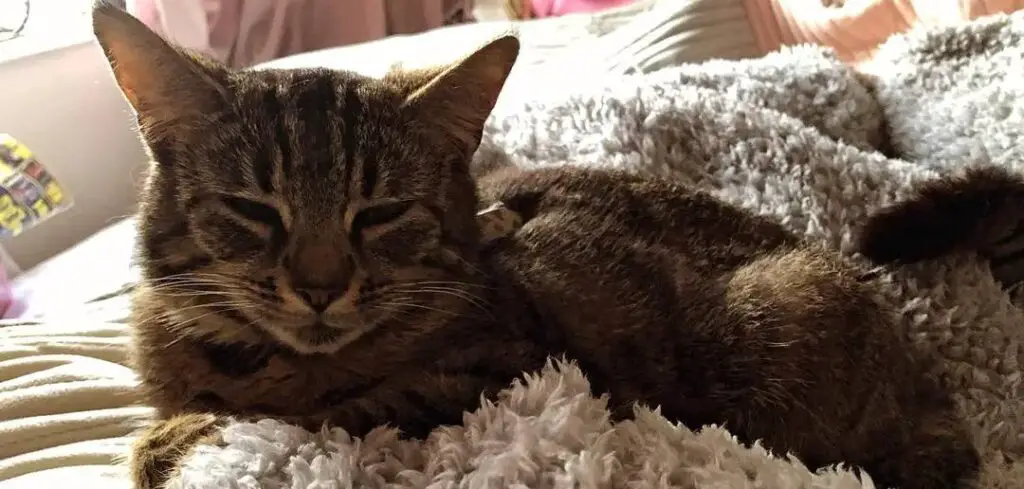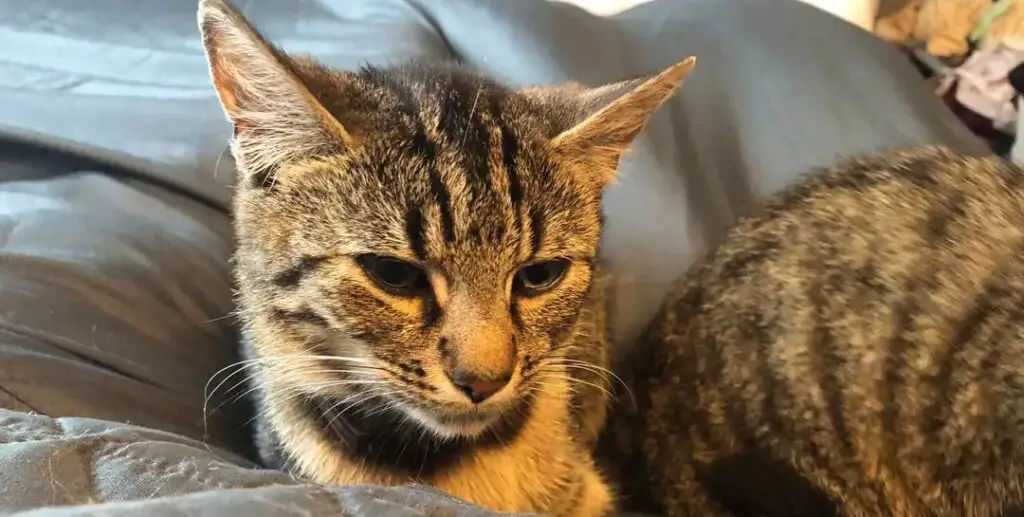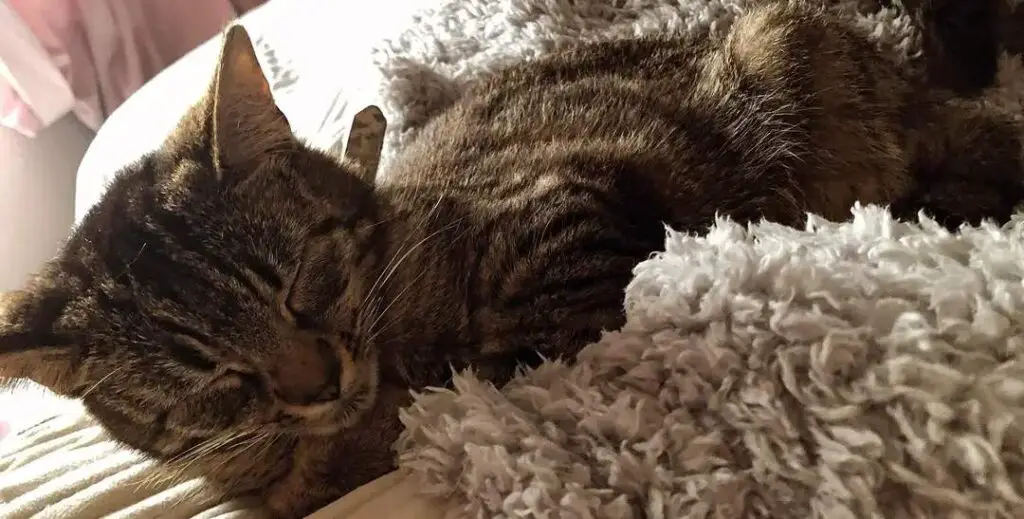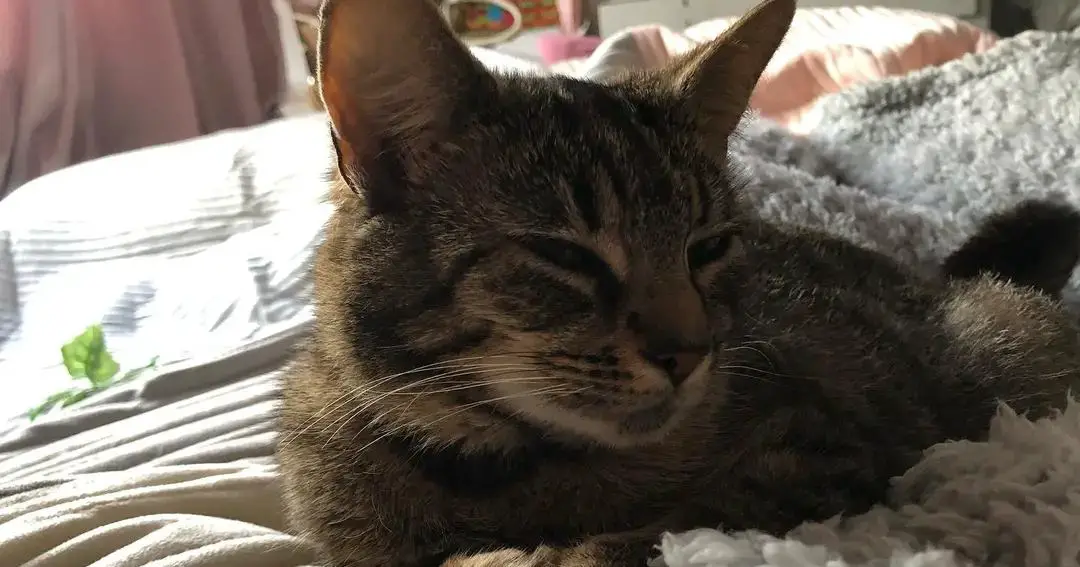How to help traumatized cats is an important question among cat owners who have gone through a lot trying to fix their cat trauma.
I know one or two things about helping a traumatized cat, I also asked my friends who had experienced cat trauma with their cat, and this is what you will get reading this post.
In this post, I’ll be discussing some common and effective ways of helping your traumatized cat based on my experience and what I gathered from my friends who have experienced cat trauma.
Let’s get started…
How to Help Traumatized Cat
Based on my experience and what I gathered about helping a traumatized cat from my friends online, here are some effective tips for helping a traumatized cat:
1. You should create a safe and quiet space for your cat to retreat to
Based on what I gathered about traumatized cats, I can tell you that when a cat is traumatized, they often need a place to retreat to where they can feel safe and secure.
This could be a spare room, a corner of your bedroom, or even a large cardboard box with a hole cut out for easy access.
Based on this, I strongly recommend you make sure the space you provide for your traumatized cat is quiet, free from loud noises and excessive foot traffic, and filled with familiar scents and soft bedding to help your cat feel comforted and relaxed.
Here are some tips to create the perfect safe space for your traumatized cat:
- Choose a quiet location: I advise you to avoid areas near loud appliances, construction, or high-traffic areas.
- Minimize noise: I recommend you use white noise machines or earplugs to block out any disturbing sounds that may affect your traumatized cat.
- Keep it a little dark: Cats often feel more secure in a little dark environment, so consider using blackout curtains or shades.
- Add familiar scents: You should also provide a familiar blanket or toy in the safe space to provide a comforting scent.
- Provide soft bedding: Finally, you should use a soft, plush blanket or a heated bed to create a cozy and inviting atmosphere.
2. You should use pheromone therapy such as diffusers or sprays
According to some of my friends who had a traumatized cat, they all agreed that pheromone therapy is a fantastic way to help calm and soothe a traumatized cat.
These synthetic pheromones mimic the natural calming pheromones that cats produce, helping to reduce stress and anxiety.
You can find pheromone diffusers or sprays specifically designed for cats at most pet stores or online.
Here are some tips for using pheromone therapy:
- Choose the right product: You should make sure you look for products specifically designed for cats, such as Feliway or Adaptil.
- Follow the instructions: You should make sure you read and follow the manufacturer’s instructions for use and dosage.
- Place the diffuser strategically: You should also position the diffuser near your cat’s safe space or in areas where they tend to feel anxious.
- Combine with other strategies: You should also use the pheromone therapy in conjunction with other strategies, such as creating a safe space and maintaining a consistent daily routine.
3. You should maintain a consistent daily routine for your cat

Cats thrive on routine, and this is especially true for those recovering from trauma.
Therefore, I suggest you establish a consistent daily schedule for your feline friend, including regular feeding times, playtime, and cuddle sessions.
This predictability and structure can help your traumatized cat feel more secure and less anxious, as they know what to expect throughout the day.
Here are some tips for maintaining a consistent daily routine:
- Establish a feeding schedule: To help your traumatized cat, I strongly believe you should feed your cat at the same times each day to provide a sense of predictability.
- Schedule playtime: You should set aside time each day for play and interaction, such as with a laser pointer or feather toy.
- Include cuddle time: You should also spend quality time with your cat, such as petting or simply sitting together.
- Stick to the routine: I advise you to try to maintain the routine even on weekends or days off to provide a sense of consistency.
4. You should provide environmental enrichment
Based on what I gathered about traumatized cats from my friends, I can tell you that keeping your traumatized cat mentally and physically stimulated is crucial for their overall well-being.
You should introduce interactive toys, such as food puzzles that encourage natural foraging behaviors, to help keep your cat’s mind engaged and prevent boredom.
You should provide cat trees and window perches to provide vertical space for your feline friend to climb, scratch, and observe the world from a safe vantage point.
Here are some tips for providing environmental enrichment:
- Food puzzles: I suggest you try using food puzzle toys that challenge your traumatized cat to work for their food.
- Cat trees and window perches: You should also try to provide vertical space for your traumatized cat to climb and observe the world.
- Scratching posts: You try and offer more scratching posts to help your traumatized cat maintain their nails and stretch their muscles.
- Rotate toys: I also recommend you rotate toys regularly to keep your cat engaged and interested.
5. You should establish a consistent daily routine for feeding, playtime, and quiet time
Based on my years of experience living with cats, I can boldly tell you that cats thrive on predictability, so establishing a consistent daily routine is crucial to helping a traumatized cat.
To do this, I recommend you start by providing regular meal times and ensuring that you feed your traumatized cat at the same time each day.
This move will help create a sense of security in your traumatized cat and prevent additional stress caused by hunger or uncertainty.
When it comes to playtime, I suggest you should set aside dedicated periods for interactive play sessions.
Engaging your traumatized cat in play helps release energy, reduces anxiety, and builds a positive bond between you and your feline companion.
Finally, I advise you to create quiet periods during the day where your traumatized cat can relax and unwind.
This can be achieved by designating a tranquil space in your home and ensuring minimal disruptions during these times.
6. You should minimize exposure to loud noises and excessive activity

From what one of my friends told me about traumatized cats, she said that loud noises and excessive activity can be overwhelming for a traumatized cat.
Therefore, you should take the necessary steps to minimize exposure to such stimuli that can trigger your traumatized cat.
Again, you should also identify potential sources of noise in your home, such as appliances, construction, or loud music, and try to reduce their impact on your cat’s environment.
She advised that soundproofing techniques, such as using heavy curtains or installing noise-absorbing materials, can help create a more serene atmosphere.
Additionally, you should consider providing your traumatized cat with a safe space where they can retreat when they feel stressed or anxious.
This could be a cozy corner with a comfortable bed or a cat tree with a hiding spot.
7. You should play calming music or white noise for your cat
Music has a powerful effect on our emotions, and cats are no exception, therefore, playing calming music or white noise can create a soothing environment for your traumatized cat.
You should look for music specifically designed for cats, which often incorporates soft melodies and gentle rhythms.
Classical music, particularly compositions with a slow tempo, can also have a calming effect.
White noise machines, such as those that produce gentle sounds like rainfall or ocean waves, can help drown out external noises that might trigger anxiety in your cat.
8. You should play with your cat using interactive toys like wands and lasers
Interactive toys are a fantastic way to engage your traumatized cat’s mind and body while redirecting their focus away from their trauma.
Wands with feathers or strings, laser pointers, and puzzle toys are all great options.
These toys simulate prey-like movements and encourage natural hunting instincts, providing mental stimulation and physical exercise.
Engage in regular play sessions with your cat, but always remember to end on a positive note and allow your cat to “catch” or “capture” the toy to maintain a sense of accomplishment.
9. You should ensure your cat is eating a well-balanced diet
A healthy diet is the foundation for a happy, resilient cat, therefore, I recommend you make sure your traumatized cat is getting all the essential nutrients they need to thrive.
You should always look for high-quality cat food that’s tailored to their age, size, and activity level.
If your cat seems to have lost their appetite, try offering small, frequent meals and tempting them with their favorite flavors.
You should also try adding a little water to their food to make it more enticing.
Remember, a balanced diet is key to supporting your cat’s overall health and well-being, including their mental and emotional resilience.
10. You should expose your cat to the source of their trauma gradually

Gradual exposure therapy can be a powerful tool in helping your cat overcome their fears and anxieties.
But it’s crucial to go at their pace and make sure they feel safe and comfortable every step of the way.
You should start by exposing them to the trigger from a distance, and gradually decrease the distance over time.
For example, if your cat is afraid of loud noises, start by playing recordings of the sound at a low volume and gradually increase the volume over time.
Offer plenty of praise, treats, and affection to reinforce positive associations.
If your cat seems overwhelmed or distressed at any point, take a step back and try again later.
With patience and consistency, your cat can learn to feel safe and secure in the presence of their trigger.
Related: common cat health problems.
11. You should consider medication prescribed by a veterinarian
In some cases, medication may be necessary to help your cat cope with the emotional aftermath of trauma.
Anti-anxiety medications or supplements can take the edge off and make it easier for your cat to engage in therapy and daily activities.
But I must warn you should work closely with your veterinarian to determine if medication is appropriate and to find the right dosage.
Your vet can also help you monitor your cat’s progress and adjust the treatment plan as needed.
Some common medications used to treat anxiety in cats include selective serotonin reuptake inhibitors (SSRIs) like fluoxetine and benzodiazepines like alprazolam.
Your vet may also recommend natural supplements like pheromone diffusers or calming herbs.
Related: How to keep your cat healthy.
Final Thoughts
In summary, helping a traumatized cat requires patience, understanding, and a gentle approach.
By creating a safe and calm environment, providing consistent routines, and seeking professional guidance if needed, you can help your feline friend overcome their trauma and thrive once again.
Remember, love and compassion are key in helping them heal and regain their trust.









